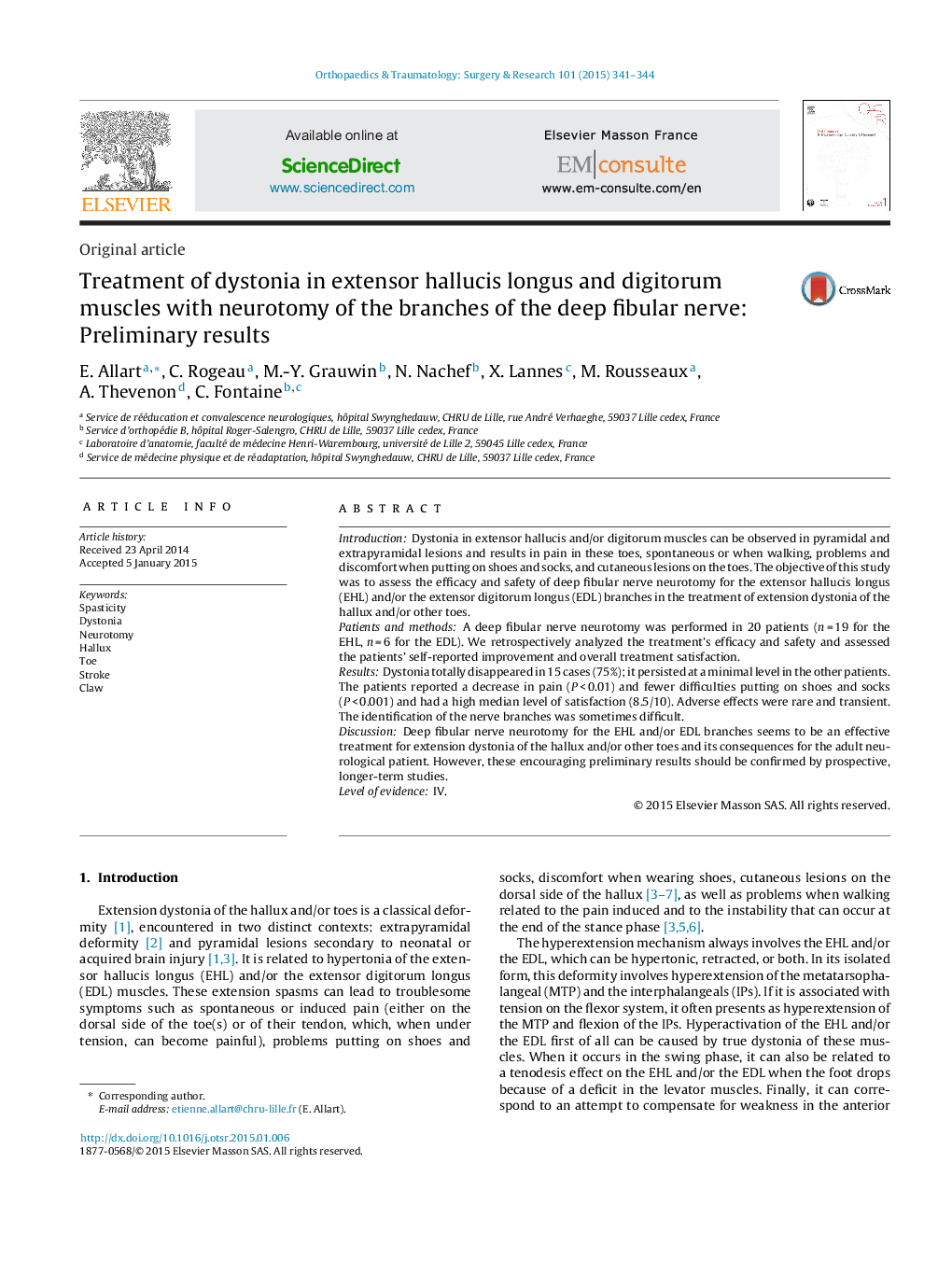| Article ID | Journal | Published Year | Pages | File Type |
|---|---|---|---|---|
| 4081178 | Orthopaedics & Traumatology: Surgery & Research | 2015 | 4 Pages |
IntroductionDystonia in extensor hallucis and/or digitorum muscles can be observed in pyramidal and extrapyramidal lesions and results in pain in these toes, spontaneous or when walking, problems and discomfort when putting on shoes and socks, and cutaneous lesions on the toes. The objective of this study was to assess the efficacy and safety of deep fibular nerve neurotomy for the extensor hallucis longus (EHL) and/or the extensor digitorum longus (EDL) branches in the treatment of extension dystonia of the hallux and/or other toes.Patients and methodsA deep fibular nerve neurotomy was performed in 20 patients (n = 19 for the EHL, n = 6 for the EDL). We retrospectively analyzed the treatment's efficacy and safety and assessed the patients’ self-reported improvement and overall treatment satisfaction.ResultsDystonia totally disappeared in 15 cases (75%); it persisted at a minimal level in the other patients. The patients reported a decrease in pain (P < 0.01) and fewer difficulties putting on shoes and socks (P < 0.001) and had a high median level of satisfaction (8.5/10). Adverse effects were rare and transient. The identification of the nerve branches was sometimes difficult.DiscussionDeep fibular nerve neurotomy for the EHL and/or EDL branches seems to be an effective treatment for extension dystonia of the hallux and/or other toes and its consequences for the adult neurological patient. However, these encouraging preliminary results should be confirmed by prospective, longer-term studies.Level of evidenceIV.
